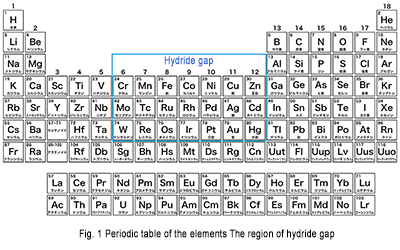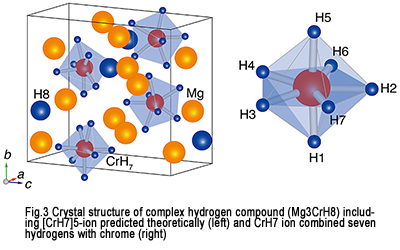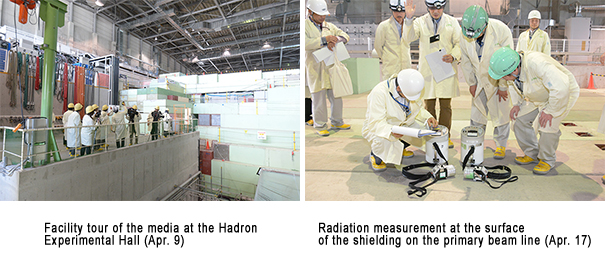| ” J-PARC News - April 2015 (Issue #120) |
| Message from Naohito Saito, Director, J-PARC Center |
|---|
| I was recently appointed to be director of the J-PARC Center. In taking on this heavy responsibility, as the successor of the previous director Dr. Yujiro Ikeda, I would like to make some brief remarks to introduce myself.
Since J-PARC began operation in 2008, it has achieved a variety of results appropriate to its role as a multi-purpose facility. Typical examples include elucidation of the neutrino oscillation phenomenon, research on the strong interaction, discovery of new superconductivity phenomena, elucidation of the function of biological materials, and development of new materials and substances. I hope to further extend research in these areas, and make progress on the riddles surrounding the origin of space, matter and life.
Reflecting on the radioactive material leak accident two years ago, we have a stronger understanding than ever before that our research is based on the support of the surrounding society. To ensure that we never repeat the same mistake again, we at J-PARC are working as a team to reform our organization and facilities. Going forward, we will continue our ceaseless work as a research facility which produces research results with a total commitment to safety. J-PARC is an international research center created by@our predecessors, and I believe my mission is to develop it further-by promoting collaboration with research institutions inside and outside Japan, improving utilization of the center by industry, and encouraging multidisciplinary research which takes advantage of J-PARC's character as a multi-purpose facility. Another objective will be to develop J-PARC into a research facility Japan can be proud of-a facility which contributes to the progress of humankind, and broadly shares the obtained research results with society.
In the future, we hope you will continue to support us with your understanding, guidance and encouragement. |
|
| Bonding Seven Hydrogens to Chromium - Potential for New Hydrogen Storage Materials - |
| A research group including Assistant Professor Shigeyuki Takagi of the Institute for Materials Research, Tohoku University, and Professor Shin-ichi Orimo of the Advanced Institute for Materials Research (AIMR), also at Tohoku University, have successfully synthesized hydrides in which 7 hydrogen atoms are bound to chromium (Cr), an atom thought to be difficult to bond with hydrogen, and this was confirmed using a neutron instrument of J-PARC's Materials and Life Science Experimental Facility (MLF).
The set of metallic elements called the "hydride gap" (Fig. 1) is made up of metallic elements which, when alone, do not bond easily with hydrogen under ordinary temperature and pressure conditions, but which can bond with many hydrogen atoms by forming complex hydrides*1. However, chromium is the single exception, and previously it has been thought that it would not bond with hydrogen, either alone or in a complex hydride.
Recently, this research group made a theoretical prediction that if 7 hydrogen atoms were to be arranged with a specific symmetry around a chromium atom, they would bond strongly with the chromium (Fig. 2). Based on this prediction, the group successfully synthesized a complex hydride of chromium, and confirmed that 7 hydrogen atoms are bound to a single chromium by using techniques such as neutron diffraction measurement with the high-intensity total diffractometer (BL21, NOVA).
This research demonstrated that chromium can bond with more hydrogen atoms than other metallic elements. As a result, it was possible to overcome the hydride gap which has been an issue for many years. Also, according to theoretical calculations, chromium has a latent capacity to bond with even more hydrogen, and in the future there are high expectations for synthesis of complex hydrides such as CrH8 ions bonded with 8 hydrogens, and CrH9 ions bonded with 9 hydrogens. This is an important result indicating a new path in the search for novel hydrides with potential for applications in fuel cells and superconductors.
These results were achieved through joint research between the Japan Atomic Energy Agency (JAEA), the High Energy Accelerator Research Organization (KEK), and the Toyota Central R&D Labs. The research has been published online in the German science journal "Angewandte Chemie International Edition."
*1 : Complex hydride A hydride containing an atom group (complex ion) in which multiple hydrogen atoms are bonded to some element with a specific symmetry such as regular tetrahedral or regular octahedral. These complex ions form stable complex hydrides by receiving electrons from elements which can easily give off electrons such as alkali metals belonging to the column at the far left column of the period table (Group 1) or the alkaline earth metals belonging to the 2nd column from the left (Group 2). |
 
 * Click here to enlarge. * Click here to enlarge. |
| |
 
 * Click here to enlarge. * Click here to enlarge. |
| |
 
 * Click here to enlarge. * Click here to enlarge. |
| |
| £to Page Top |
| |
|
| Number of Protons Hit on a Target in T2K Experiment Exceeds 1 Billion Trillion (March 26) |
| The T2K (Tokai To (2) Kamioka) Experiment has achieved cutting edge results such as discovery of the electron neutrino appearance phenomenon in 2013, and observation of the muon neutrino deficit phenomenon at the highest precision in the world. At present, the experiment is continuing-producing antineutrinos (the antiparticle of the neutrino) and sending these to Super-Kamiokande, with the aim of closing in on the fundamental problem of why, at present, antimatter (made up of antiparticles) does not exist in the universe. In February 2015, continuous operation was achieved with a beam intensity of 320 kW. This corresponds to roughly 170 trillion protons being sent to the neutrino production target every 2.5 seconds, from the 50 GeV synchrotron to the Neutrino Experimental Facility. This is a world record in terms of the number of protons per pulse extracted from the synchrotron accelerator.
On March 26, the number of protons sent to the target at the Neutrino Experimental Facility since acquisition of data by the T2K experiment began in January 2010 exceeded 10^21. In order to obtain physics results relating to the properties of antineutrinos, acquisition of further data will be necessary, and beam intensity and the cumulative number of protons have steadily increased in moving toward those results. The experimental group is now working hard to analyze this data. |
| |
| £to Page Top |
| |
| On April 14, the MLF shifted to operation with beam power increased from 400 kW to 500 kW. |
| |
| £to Page Top |
| |
|
| (1) Explanatory Meeting Held for Residents (April 3-5) The J-PARC Center has completed renovation works at the Hadron Experimental Facility, and recently held three explanatory meetings at Tokai Village for local residents. A total of 67 people participated in these meetings. The J-PARC Center apologized, once again, for the accident and provided an overview of the accident and related problems, reported on implementation of the facility and equipment measures to prevent recurrence as well as the efforts to strengthen the safety management system and improve the safety awareness. At each venue, we heard valuable opinions from the participants, answered questions, and then closed the meeting.
(2) Resumption of operation (April 24) After the radioactive material leak accident which occurred on May 23, 2013, the J-PARC Center suspended the operation of the Hadron Experimental Facility. The repairs of the facility to prevent accident recurrence have been finished, and were reported to Ibaraki Prefecture, Tokai Village, and neighboring local governments. We also held explanatory meetings for local residents. On the 9th, a conference and a facility tour were provided to the media to explain we would start to check the facility performance; in the evening, we began the performance test with the proton beam from the accelerator. On the 17th, the facilities were inspected by the Nuclear Safety Technology Center, an inspection body registered by the government and were confirmed to be no problems. We received the certificate on the 21st. We resumed the operation on the 24th. |
| |
 
 * Click here to enlarge. * Click here to enlarge. |
| £to Page Top |
| |
|
| Completion of J-PARC Research Building (March 27) |
| The J-PARC Research Building, which has been under construction to provide greater convenience for users of neutron beams, was completed on March 27. With a total floor area of 5,900 m2 and four floors above ground, this research building has facilities including living spaces, various experiment preparation rooms, computer rooms and conference rooms, as well as an atrium (plaza) and conversation spaces to facilitate interaction between experiment users. Use of the building is scheduled to begin in mid May. |
|
| In Ibaraki Prefecture, there are two neutron beamlines at J-PARC's Materials and Life Science Experimental Facility (MLF): the iMATERIA material structure analysis system and the iBIX biological material analysis system. Active efforts are being made to promote and expand industrial utilization together with Ibaraki University and other relevant organizations. Recently, a press statement (3/27) was made jointly by Ibaraki University and the J-PARC Center covering topics such as pioneering research results connected with the development of new materials, the world's first cases of structure analysis in the protein field, and a sample mail-in service (proxy measurement). |
|
| For this J-PARC Hello Science course, the leader of the "Creative Thinking Workshop: Kid's Studio" invited us to an extracurricular class of the workshop (held at the Yato Kindergarten in Nishitokyo City), and the theme was "Open the Door to Science! - Don't Be Afraid Mom!" There were about 30 participants, including workshop members ranging from elementary to high school, as well as parents and guardians.
To begin, participants were welcomed with a skit and picture-card show, produced based on J-PARC pamphlets for children. Then, in science experiments, the J-PARC public relations advisor, Dr. Shinichi Sakamoto, provided an easy-to-understand explanation, using experimental equipment made with familiar materials, of the principle whereby protons are accelerated by the force of electricity or a magnet. Everyone was very impressed when they saw the amazing power produced by static electricity and magnets. Later, the participants made "pendulum bells" and "clip motors" using empty cans and paper clips that were brought in. For all the participants, including mothers who worked intently on their projects and were thrilled when their constructions worked well, it was a time for having fun while getting in touch with one aspect of science. |
|
©2015 J-PARC Center. All rights reserved.
|
|
|